Crypt of the square of Notre-Dame (Paris)
 The
archaeological Crypt under the square of Notre-Dame of Paris was
arranged to protect the vestiges discovered at the time of the
excavations carried out since 1965, by the Commission of the Old man
Paris (department of history of architecture and archaeology).
The
archaeological Crypt under the square of Notre-Dame of Paris was
arranged to protect the vestiges discovered at the time of the
excavations carried out since 1965, by the Commission of the Old man
Paris (department of history of architecture and archaeology).
 It
is not a question of a museum but of the presentation of the ruins
preserved in the ground of the Island of the City covering the period
ranging between IIIth and the XIXth century.
It
is not a question of a museum but of the presentation of the ruins
preserved in the ground of the Island of the City covering the period
ranging between IIIth and the XIXth century.
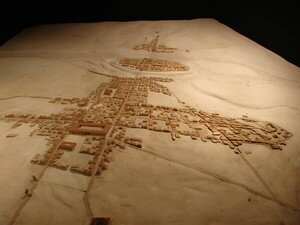 This
space, vastest of the kind at the time, opened its doors in 1980 with
for objective the presentation of the elements of the buildings which
followed one another on the site of Antiquity the XIXth century:
Gallo-Roman quay, sections of the foundation of the rampart set up in
IVe century, vestiges of a large urban house dating from IVth century)
whose several parts comprise hypocaustes (heating system which the
Romans used in the public and deprived thermal baths),
This
space, vastest of the kind at the time, opened its doors in 1980 with
for objective the presentation of the elements of the buildings which
followed one another on the site of Antiquity the XIXth century:
Gallo-Roman quay, sections of the foundation of the rampart set up in
IVe century, vestiges of a large urban house dating from IVth century)
whose several parts comprise hypocaustes (heating system which the
Romans used in the public and deprived thermal baths),
 foundations
of large building of form basilicale with five naves (perhaps basilica
Saint-Etienne (Life century) whose dimensions (36 m broad on 70 m
length) let think that it was the largest church of Gaule), foundations
of the Holy-Genevieve church of Burning (Ixe century), basement of the
old vault of the Hospital, foundations of the old people's home of
Child-Found, traced haussmannians sewers.
foundations
of large building of form basilicale with five naves (perhaps basilica
Saint-Etienne (Life century) whose dimensions (36 m broad on 70 m
length) let think that it was the largest church of Gaule), foundations
of the Holy-Genevieve church of Burning (Ixe century), basement of the
old vault of the Hospital, foundations of the old people's home of
Child-Found, traced haussmannians sewers.
 The
site was born in the Island from the City, with the crossing of a river
road and a terrestrial road. The Seine and its affluents gave the means
of communication by water, the basement provided the stone to be built
and the stone with plaster.
The
site was born in the Island from the City, with the crossing of a river
road and a terrestrial road. The Seine and its affluents gave the means
of communication by water, the basement provided the stone to be built
and the stone with plaster.
Parisii seem to have been fixed in the middle of IIIth front century
J.C. César holds an assembly in their city, Lutèce, in 53 front J.C.
They are raised into 52 with the call of Vercingétorix. Labiénus,
lieutenant of César crushes them.
Gallo-Roman Lutèce:
The Roman
conquerors install a new city on the height of left bank the Island of
the city seems to have played a secondary part then.
 Cruel invasions - Bottom Empire:
Cruel invasions - Bottom Empire:
The Germanic invasions of the end of IIIth century a. J.C devastate the Gallo-Roman city. IVth and Vth centuries, Paris plays a great strategic part. The military emperors, who defended the border of North and the East, there remain: Julien the Apostate in 357-358, then in 359-360, Valentinien in 365 and 366. About the moment when, in Lutèce, Julien is high with the row of Auguste by his soldiers (360 a. J.C.), the city starts to lose its name to take that of Paris.
 High-Empire
remain of the traces of habitat (among which the archaeologists
discovered a bronze statuette of the Génius god), sections of the quay
and port antiques of Lutèce as well as a powerful wall with buttress,
for which there is difficult to give an interpretation.
High-Empire
remain of the traces of habitat (among which the archaeologists
discovered a bronze statuette of the Génius god), sections of the quay
and port antiques of Lutèce as well as a powerful wall with buttress,
for which there is difficult to give an interpretation.
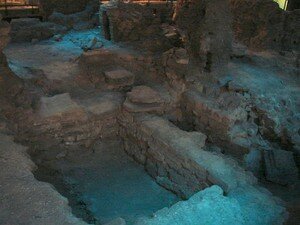 The
Lower Empire is preserved sections of the foundation of the rampart set
up at IVe century of our era, after the cruel invasions of the end of
IIIth century. It is made up of large blocks of which some are
re-employments. It is with the foot of this rampart that a treasure was
discovered in 1970, a brown ceramics which contained more than 800
currencies.
The
Lower Empire is preserved sections of the foundation of the rampart set
up at IVe century of our era, after the cruel invasions of the end of
IIIth century. It is made up of large blocks of which some are
re-employments. It is with the foot of this rampart that a treasure was
discovered in 1970, a brown ceramics which contained more than 800
currencies.
The capital of the kingdom of Clovis:
It becomes truly a capital when Clovis, king of Frank (482-511) there establishes the seat of his kingdom. His/her son, Childebert 1st (511-588), makes build in the City the large church Saint-Etienne cathedral, whose plan with five vessels was similar to that of the first Saint-Pierre of Rome. The foundations which were 36 m wide and at least 70 m length and that one finds under the current cathedral, were put at the day in the excavations - in particular part of the frontage. Its dimensions probably made of it the largest church of Gaule.
At the time Carolingian, the sovereigns, turned towards the East, forsake the capital to such a degree that it is the Account of Paris, Eudes, ancestor of Capetians, which defends the city against the Norman ones. After the very long seat of 885 the city is reduced to the Island of the City. In 1163, the bishop of Paris, Maurice de Sully, begins the frontage of Notre-Dame. The merovingian cathedral Saint-Etienne is cut down. A way, the Neuve Notre-Dame street is traced in order to convey materials necessary to the construction of the cathedral. Leading to the Square, in the center of the frontage of Notre-Dame, it is the basement of this way which is presented in the crypt. This street of seven meters width was opened by Maurice de Sully, towards the end of XIIth century, in order to convey materials necessary to the construction of the cathedral.
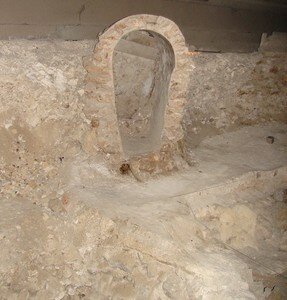 The Square until the medium of XVIIIth century
The Square until the medium of XVIIIth century
• In edge of the Seine, between this one and the New Notre-Dame street, the old Hospital. It communicated with its dependences of
left bank by two buildings (the vault Co.-Agnes, of XVth century), the
room of the Legate, XVIth;
• in the East close to Notre-Dame, was its own vault. A small street and houses separated it from the street Neuve Notre-Dame.
•
In the North of the street (side of the current
buildings of the Hospital) was houses and two churches, saint-Genevieve
of Burning (which one sees foundations in the crypt), with the West,
and Saint-Christophe, towards Notre-Dame.
 The installation of the Square in 1750:
The installation of the Square in 1750:
In the middle of XVIIIth century, the Boffrand architect was charged to build a new old people's home of Child-Found, northern side of the street Neuve Notre-Dame. He increases a little the square, widens the street Neuve Notre-Dame towards north to build his building. In 1772, a large fire devastates the Hospital: the vault Co.-Agnes, the room of the Legate are destroyed. The hospital buildings the length of the Seine will be rebuilt.
 The Square of Haussmann and the current Square:
The Square of Haussmann and the current Square:
Haussmann extended the square in a disproportionate way, raised a barracks (today Prefecture of Police force) at the bottom of the place and, in edge of this one, current Hôtel-Dieu. The Square became a space bituminized with the end of which the cathedral seemed reduced.
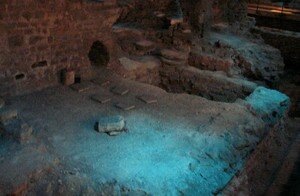 The installation of the Square (1970):
The installation of the Square (1970):
The construction of the archaeological crypt made it possible to give to the Square a relief and an aspect which evoke its old state. A unevenness marks the Western limit of the Square former to work of Boffrand (from there one can appreciate colossal dimensions of the towers of the cathedral). The space occupied by the old street Neuve Notre-Dame is marked by sett paving; the line of the frontages is announced by white stones on which the names of their signs are engraved. A different paving appears the plan of the church mérovingienne Saint-Etienne (except for 5 vessel, in North, to the site of which the roadway passes.
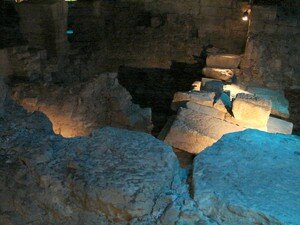 http://www.parissweethome.com/parisrentals/art_fr.php?id=34
http://www.parissweethome.com/parisrentals/art_fr.php?id=34
http://www.paris.fr/portail/Culture/Portal.lut?page_id=6468&document_type_id=5&document_id=19971&portlet_id=14628
http://www.insecula.com/salle/MS00993.html

/https%3A%2F%2Fprofilepics.canalblog.com%2Fprofilepics%2F1%2F1%2F116167.jpg)
/https%3A%2F%2Fstorage.canalblog.com%2F49%2F16%2F312499%2F14620054_o.jpg)
/https%3A%2F%2Fstorage.canalblog.com%2F53%2F18%2F312499%2F14151229_o.jpg)
/https%3A%2F%2Fstorage.canalblog.com%2F07%2F05%2F312499%2F14149867_o.jpg)
/https%3A%2F%2Fstorage.canalblog.com%2F11%2F35%2F312499%2F14149307_o.jpg)
/https%3A%2F%2Fstorage.canalblog.com%2F90%2F14%2F312499%2F14125247_o.jpg)

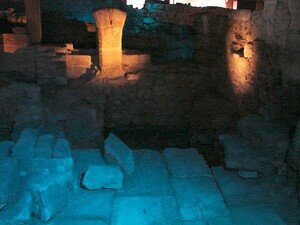
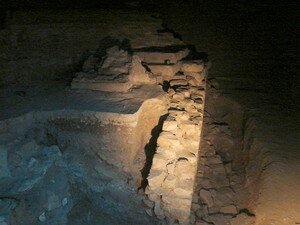


/https%3A%2F%2Fstorage.canalblog.com%2F12%2F98%2F137895%2F6624411_p.jpg)
/https%3A%2F%2Fstorage.canalblog.com%2F34%2F82%2F137895%2F27207854_p.jpg)
/https%3A%2F%2Fstorage.canalblog.com%2F32%2F37%2F137895%2F15872299_p.jpg)
/https%3A%2F%2Fstorage.canalblog.com%2F37%2F81%2F137895%2F15879822_p.jpg)